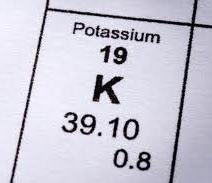April 7th, 2011 by Toni Brayer, M.D. in Health Policy, Opinion
No Comments »


I am all for any proposal that will improve heath care in America. Improvement means controlling costs, covering all Americans so no one has to worry about going bankrupt to pay for health care. Improvement means access to quality care without having to worry about losing your job, which means losing your coverage. Improvement means a system where all incentives are aligned to prevent disease, rather than using expensive technologies and hospitals to treat disease after the fact. Any proposal that gets us there has my vote.
In the GOP “Path to Prosperity” budget for 2012, they propose a few things that are good and a few big things that are bad…really really bad. First the good. Capping the medical malpractice lawsuits for “pain and suffering” would be a huge step forward. Patients should be compensated for medical errors but the “hit the lottery” windfalls for pain and suffering are costly drivers that make no sense. There is no place in the world, besides the USA, that has such onerous medical malpractice lawsuits. And they drive up cost for everyone. Read more »
*This blog post was originally published at EverythingHealth*
April 2nd, 2011 by Toni Brayer, M.D. in Health Policy, Research
No Comments »

 The single most important medicine ever discovered is the antibiotic. Prior to 1930, humans died at early ages of simple infections and even childbirth was a major killer of women because of infection. The mortality rate from simple staph aureus was as high as 80%, but between 1944 and 1972 the human life expectancy jumped by 8 years because of antibiotics. By 1950 the golden age of antibiotics was already looking tarnished as organisms became resistant to the drugs. Now many medical advances that we take for granted, including cancer treatment, surgery, transplantation and neonatal care are endangered by increasing antibiotic resistance and a decline in new medications to combat the super germs.
The single most important medicine ever discovered is the antibiotic. Prior to 1930, humans died at early ages of simple infections and even childbirth was a major killer of women because of infection. The mortality rate from simple staph aureus was as high as 80%, but between 1944 and 1972 the human life expectancy jumped by 8 years because of antibiotics. By 1950 the golden age of antibiotics was already looking tarnished as organisms became resistant to the drugs. Now many medical advances that we take for granted, including cancer treatment, surgery, transplantation and neonatal care are endangered by increasing antibiotic resistance and a decline in new medications to combat the super germs.
Drug resistance is both a public health and global security threat. Resistance has emerged for all known antibiotics in use. For most antibiotics, resistant genes have created super bugs that require more combinations of antibiotics to treat and there are certain infections that we cannot effectively treat. Read more »
*This blog post was originally published at EverythingHealth*
March 12th, 2011 by Toni Brayer, M.D. in Health Tips, Research
No Comments »

Several studies have shown that women have a higher mortality rate than men if they have a heart attack. A study published in the American Heart Journal helps to explain why. The researchers looked at data from 2,542 women who had a heart attack. Compared to men, the women were older, less likely to be white, and less likely to smoke. They also had more serious health conditions than the men. They had diabetes, high blood pressure (hypertension), congestive heart failure, and chronic obstructive pulmonary disease (COPD).
We’ve known for a long time that women are about 10 years older than men at the time of their first heart attack. The authors believe that the reason women are more likely to die is because of these other conditions that are present. Women in the study were also more likely to receive a blood transfusion and experience gastrointestinal bleeding, strokes, and vascular complications which lead to death.
They didn’t find any gender difference when they controlled for these other conditions. The number of diseased vessels were the same as was the severity of stenosis.
So what does this tell women? The guidelines for longevity and good health haven’t changed: Don’t smoke, control high blood pressure, and make sure your weight is healthy to prevent diabetes and other vascular problems. Stay active. Heart attacks can be prevented by good lifestyle choices.
*This blog post was originally published at EverythingHealth*
March 4th, 2011 by Toni Brayer, M.D. in Health Tips, Research
No Comments »

 There are few medical conditions that people fear more than a stroke. We know that blood pressure control and lowering cholesterol levels reduces stroke risk. Now, thanks to a huge analysis from Italy published in the Journal of the American College of Cardiology, we know that higher dietary consumption of potassium is associated with lower rates of stroke and could also reduce the risk of coronary heart disease and total cardiovascular disease, too. What is even more remarkable is that the results apply to all parts of society and not just to specific “at-risk” subgroups.
There are few medical conditions that people fear more than a stroke. We know that blood pressure control and lowering cholesterol levels reduces stroke risk. Now, thanks to a huge analysis from Italy published in the Journal of the American College of Cardiology, we know that higher dietary consumption of potassium is associated with lower rates of stroke and could also reduce the risk of coronary heart disease and total cardiovascular disease, too. What is even more remarkable is that the results apply to all parts of society and not just to specific “at-risk” subgroups.
Most doctors aren’t even aware of how important it is to eat potassium-rich foods. And what are these foods that have potassium? Surprise: It’s fruits and vegetables like bananas, tomatoes, oranges, apricots, most legumes, spinach, winter squash, avocado, kiwi, and cantaloupe. Actually, almost all fruits and veggies have moderate to high potassium content.
The researchers looked a number of well-done studies that included 247, 510 participants over age 30 and found that those patients with the higher potassium intake reduced their stroke risk by 21 percent. The Italian doctors say the protective effect of potassium against stroke is in part due to its blood pressure lowering effects and also due to other properties of the potassium mineral, such as the inhibition of free radical formation.
I’ve written before about the DASH diet, which also found that reduction of sodium and addition of fruits and vegetables to the diet is an effective way to control blood pressure. The DASH diet is high in potassium.
Think about it: Did you have five servings of fruits and vegetables today? Numerous studies have shown their life-prolonging benefits. This new study just adds to what we already know. I challenge all readers to keep a diet count and make sure you are eating five fruit and vegetable servings a day — every day — to help reduce your risk of stroke, cancer, and heart attack.
*This blog post was originally published at EverythingHealth*
February 21st, 2011 by Toni Brayer, M.D. in Health Tips, Opinion
No Comments »

 “But doc, my blood pressure is always normal at home.” I wish I had a dollar for every time I have heard that line and I know it is true. When some patients come to see me, their blood pressure is abnormally high (above 130/90). This is known as “white-coat hypertension.” Although it has been thought to be from anxiety about seeing the doctor, even long-established patients who have no conscious anxiety can exhibit elevated blood pressure in the office.
“But doc, my blood pressure is always normal at home.” I wish I had a dollar for every time I have heard that line and I know it is true. When some patients come to see me, their blood pressure is abnormally high (above 130/90). This is known as “white-coat hypertension.” Although it has been thought to be from anxiety about seeing the doctor, even long-established patients who have no conscious anxiety can exhibit elevated blood pressure in the office.
Because blood pressure naturally fluctuates and the office visit is not a “normal” setting, it is important for patients who have high blood pressure (hypertension) to have their own blood pressure cuff at home. Now that devices are automated and easy to use, everyone with hypertension should be monitoring their blood pressure in the comfort of their own home. I advise multiple readings over a week at different times of day. Get a reading when resting and when rushing around. Take your blood pressure after you exercise and after a meal. It is important to keep a log and write it down. Only then can we see patterns and know if the blood pressure is controlled or not.
Blood pressure readings in the doctors office are not necessarily the most accurate. Patients are often rushed trying to get parked and in on time. Medical assistants can use the wrong size cuff or not position the arm correctly. Listening (auscultation) is not very accurate due to human error. It is the multiple readings over time that give a more accurate picture of blood pressure control.
High blood pressure in the office can be true hypertension or it can be white-coat hypertension that is usually controlled at home. If a patient is on blood pressure medication and has controlled blood pressure at home, I will not add more medication just because they are elevated in the office. If a patient has not been diagnosed with hypertension and his or her blood pressure is elevated in the office, he or she is advised to get their own blood pressure cuff for at home and return with readings for us to review. This way we can minimize unnecessary and expensive medication and make sure we are protecting the patient as well.
*This blog post was originally published at EverythingHealth*














